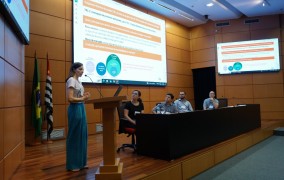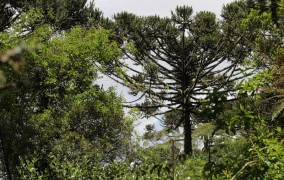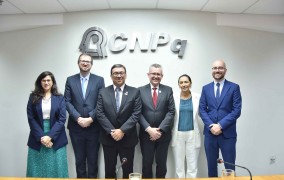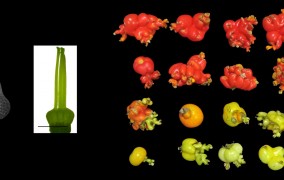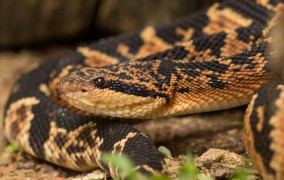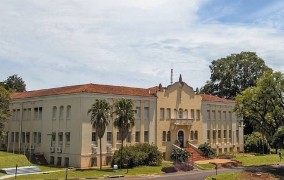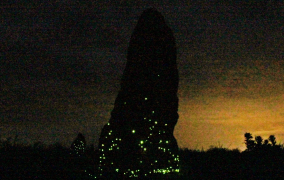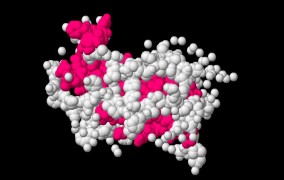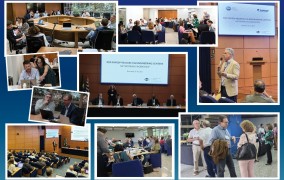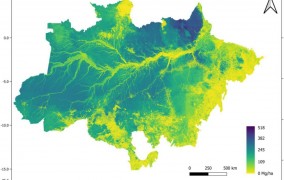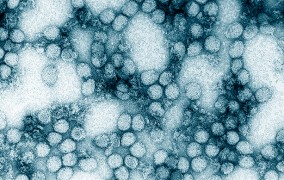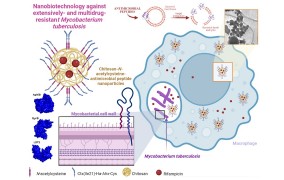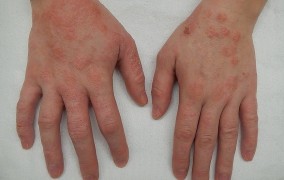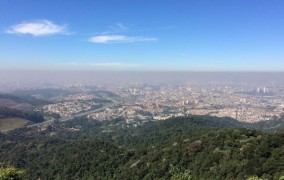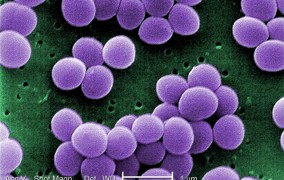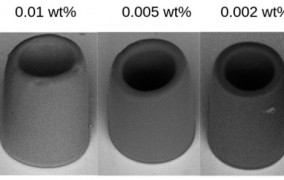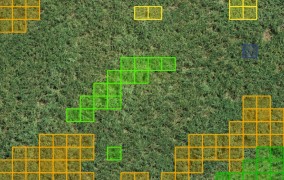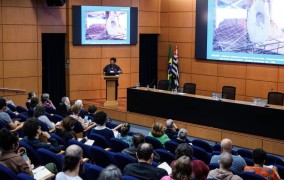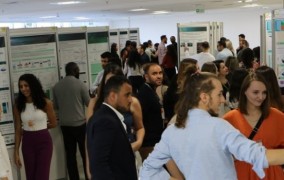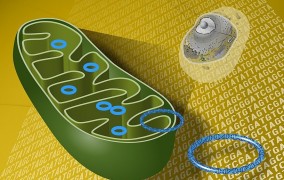
Search: 4362 news
-
Startups present results of projects conducted under aegis of Centelha SP program
2024-01-17Representatives of 44 startups based in São Paulo received technical support for a year to develop products and business plans via in-person training, mentoring and workshops run by experts from FAPESP and associations that foster entrepreneurship. -
More than 80% of tree species endemic to the Atlantic Rainforest are threatened with extinction
2024-01-15A study published in the journal Science shows for the first time the degree of threat to all tree species in the biome, classifying 65% as vulnerable or endangered to some extent. According to the authors, their findings are conservative – the actual situation could be even more alarming. -
Climate change: Brazilian semi-arid biome could lose over 90% of mammal species by 2060
2024-01-10Even under the best-case scenario, mathematical models suggest 87% of mammals will be left without a habitat in the Caatinga within three and a half decades. The loss will be worst in the eastern portion of the biome, where its main cities are located. -
Amazon+10 Initiative receives more than BRL 30 million from the United Kingdom
2024-01-10The funding will be for scientific expeditions under the current call for proposals which is taking applications until April 29, 2024. -
Study reveals key molecular mechanisms involved in development of tomato plant
2024-01-10Research conducted at the University of São Paulo shows how interaction between plant hormone gibberellin and small RNA molecules enables development of ovaries, followed by fruit and seeds. This knowledge serves as a basis for ways to increase tomato yield. -
Applications open for School of Advanced Science on Technology and Innovation Strategies and Policies for Economic Development
2024-01-10The school will provide a set of intensive courses for postgraduate students and early-career researchers on the recent developments in the economics of technological change and in ST&I policy studies. Registrations are due on January 26, 2024. -
Climate intelligence platform supports decision-making by farmers and agroindustry
2024-01-10Agrosmart, a startup based in São Paulo state, presented its portfolio of solutions during COP28, the UN Climate Change Conference held in Dubai. -
FAPESP at COP28 reinforces coalition to create new international body to protect the oceans
2024-01-10The International Panel for Ocean Sustainability (IPOS) will translate scientific information into policymaking decisions that help protect the world’s oceans. -
Intravaginal sponge can make treatment of candidiasis more comfortable and effective
2024-01-08The device is under preclinical trials; the sponge is made of soft, biodegradable material and releases medication slowly into the organism. -
Researchers at São Paulo State University propose conditions for maximizing quantum entanglement
2024-01-03Entanglement is a key concept in quantum physics and a condition for the success of quantum computing. -
Brazilian researchers discover two novel peptides with biotechnological potential in snake venom
2024-01-03Fragments of hemorrhagic toxins that may help treat high blood pressure were found in the venom of the pit viper Cotiara, which inhabits the South of Brazil, and that of the South American bushmaster, a denizen of tropical rainforests. The molecules might one day be used in drugs with fewer adverse side effects. -
Incomplete notification and underreporting of snakebites can hinder public health actions, study suggests
2024-01-03A survey conducted in a Brazilian state with the country’s second-highest number of ophidic accidents draws attention to the need to train health workers to complete notification forms correctly. Better data will help improve research and antivenom distribution. -
São Paulo School of Advanced Science in Precision Livestock Farming accepts applications until January 20
2024-01-03The main aim is to optimize farm management via real-time control of animal productivity and environmental impacts, among other things. -
Startup develops rapid test to help detect cervical cancer
2024-01-03The kit is designed to be used for screening. If the result is negative, it should be repeated a year later. If positive, the individual should see a specialist. -
Diversity of bioluminescent beetles in Brazilian savanna has declined sharply in 30 years
2024-01-02Surveys conducted in the Cerrado since the 1990s show falling biodiversity as the agricultural frontier advances in the vicinity of Emas National Park. Species with biotechnological potential are dwindling and even disappearing. -
Growth hormone influences regulation of anxiety via a specific group of neurons
2024-01-02Researchers at the University of São Paulo identified in mice the neurons associated with the anxiolytic effect of growth hormone. Their discovery paves the way for the development of novel classes of medications for neuropsychiatric disorders. -
Workshop assembles researchers affiliated with centers supported by FAPESP and United States’ NSF
2023-12-20The event took place in São Paulo on November 29-30 to foster interaction and promote center-to-center relations. -
A new map showing all above-ground biomass in the Brazilian Amazon
2023-12-20The map is derived from a study conducted by researchers at Brazil’s space research institute and collaborators, and combined airborne laser scanning, satellite imagery and forest inventories. The results will support planning, conservation and sustainable management decisions. -
3D material found to break down antidepressant that contaminates water bodies worldwide
2023-12-20Brazilian researchers tested a photocatalyst based on zinc oxide and found it to perform well in degrading sertraline, an emerging pollutant. -
Brazilian researchers report detailed analysis of heart injury caused by yellow fever virus
2023-12-20The study is the first-ever demonstration of the anatomical substrate for the cardiac arrhythmias that occur in human yellow fever. -
Nanoparticles with antibacterial action shorten duration of tuberculosis treatment
2023-12-20Researchers at São Paulo State University tested the action of nanoparticles loaded with antibiotics and other antimicrobial compounds on cells infected by the bacillus that causes tuberculosis. The results suggest the strategy can overcome multidrug bacterial resistance. -
Gut-skin connection is key factor in atopic dermatitis, research review shows
2023-12-18A review article by Brazilian researchers lists recent discoveries on this chronic inflammatory skin disease, which affects around 10% of adults and 25% of children. -
Atmospheric pollutants in São Paulo exceeded recommended levels even at the height of the pandemic
2023-12-18Brazilian researchers analyzed air pollution in metropolitan São Paulo in 2019-20 when mobility restrictions and social distancing applied in the southern hemisphere’s largest city. Even so, the daily average exceeded the World Health Organization’s air quality standard on 75 days. -
Photodynamic action weakens resistance to antibiotics in bacteria that attack airways
2023-12-18A study conducted at the University of São Paulo’s Optics and Photonics Research Center in Brazil showed a change in the bacterium’s sensitivity after five applications. -
Embedding nanodiamonds in polymer can advance quantum computing and biological studies
2023-12-13Researchers at the University of São Paulo’s São Carlos Institute of Physics developed the technique, which can be used in information processing and cell marking, among many other applications. -
Artificial intelligence applied to drone imagery helps improve agricultural productivity
2023-12-13A Brazilian startup’s AI algorithms detect infestations, classify weeds and produce localized spraying files. -
The art of Rosana Paulino lays bare the trauma of slavery in Brazil
2023-12-13The artist outlined her life’s work in the Eighth FAPESP 2023 Lecture, which was entitled “Roots that emerge: interweavings of art and science”. -
Applications open for São Paulo School of Advanced Science on Transdisciplinarity
2023-12-13The event is being organized by the State University of Campinas with FAPESP’s support. About 80 applicants will be selected. Priority will be given to PhD candidates, early-career researchers, public servants with a master’s degree and Indigenous community leaders with recognized know-how in this field. -
Study paves way for development of advanced quantum networks
2023-12-12This research carried out at the State University of Campinas focused on the use of nanometric optomechanical cavities as bridges between superconducting circuits and optical fibers, with applications in computing and quantum communications. -
Long COVID is linked to persistent damage to mitochondria, the ‘powerhouses’ of our cells
2023-12-11Infection by SARS-CoV-2 can suppress the expression of mitochondrial genes involved in production of ATP cell fuel in many vital organs. The discovery paves the way to a search for strategies to restore mitochondrial function.
Most popular
-
Amazon scorpion toxin kills breast cancer cells
2025-06-18
-
Spending more than 3 hours a day sedentary worsens teens’ mental health
2025-02-20
-
Climate change could drastically reduce aquifer recharge in Brazil
2025-09-17
-
Microplastics may affect bone health
2025-09-17
-
‘Science alone will not save us’: Paulo Jannuzzi highlights the need for republican values
2025-09-17
-
Butantan Institute says its dengue vaccine protects against serotype 3
2025-02-05
-
FAPESP aims to boost the development of quantum technologies in Brazil
2025-01-15
-
Molecule reverses cognitive deficits associated with aging and dementia in animal tests
2025-05-12
-
Ants defend plants from herbivores but can hinder pollination
2025-09-15
-
Personality traits influence the development of insomnia
2025-05-19





